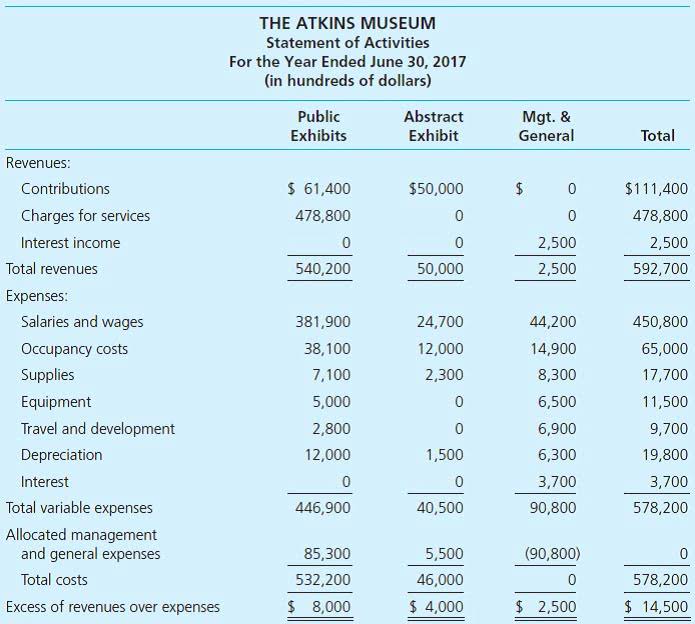
This transaction has an effect on inventory for both the seller and the buyer, because inventory is physically moving. Remember, the rules for perpetual and periodic inventory still apply so we will look at both cases here. We will also look at the transactions from the seller and buyer’s perspectives.
- Return of merchandise sold for cash is entered in the cash payments journal or cash book.
- On Feb 2, the journal entry to adjust inventory and record cost of goods sold account.
- The two most common contra accounts on a balance are accumulated depreciation and the allowance for doubtful debts.
- Whereas assets normally have positive debit balances, contra assets, though still reported along with other assets, have an opposite type of natural balance.
- If a contra account is not used, it can be difficult to determine historical costs, which can make tax preparation more difficult and time-consuming.
- If contra assets appear in the credit column, record contra liabilities on side.
Sales Discounts
- A return occurs when inventory is purchased and later returned to the seller.
- Generally in the financial statements the revenue account would be offset against the contra revenue account to show the net balance.
- All of our content is based on objective analysis, and the opinions are our own.
- It depends on whether the sale of those goods that were returned were cash sales or credit sales.
- For example, if a company just reported equipment at its net amount, users would not be able to observe the purchase price, the amount of depreciation attributed to that equipment, and the remaining useful life.
- The credit to the accounts receivable account will reduce the outstanding amount of accounts receivable.
In this scenario, a write-down is recorded to the reserve for obsolete inventory. Some of the most common contra assets include accumulated depreciation, allowance for doubtful accounts, and reserve for obsolete inventory. If it were the credit sales, then we should credit to the account receivable account. If the sales were cash sales, we should credit them to the cash or bank account since the company will need to pay back to the customer. Either cash sale or credit, we need to reduce cash or account receivable accounts and reduce the revenues.

Journal Entries for Sales Return:
Obsolete, Unsold and Unusable Inventory are contra asset accounts with a credit balance that reduce the normal debit balance of the main Inventory asset account in order to present the net value of inventory on a company’s balance sheet. To illustrate, let’s use the contra asset account Allowance for Doubtful Accounts. Since it is a contra asset account, this allowance account must have a credit balance (which is contrary to the debit balances found in asset accounts).
Sales Returns and Allowances Journal

In other words, contra sales revenue is the difference between gross revenue and net revenue. Under the perpetual method, we must always track changes to the cost of inventory. Yes, the cost is now $200 lower than it was previously recorded because of the allowance provided by Whistling Flutes. Even though the quantity of inventory is the same, the cost has changed. First, let’s look at this from the perspective of Medici Music, the buyer.
- For example, when a line item on your balance sheet presents the balance of accounts receivable, report the value of allowance of uncollectible accounts below the accounts receivable line.
- In the seller’s books, a return or allowance is recorded as a reduction in sales revenue.
- The main reason that is recording in debit while the sales return happened is that this account will decrease the total sale revenue.
- Since we are tracking the returns through Sales Returns and Allowances, there is no need to create a contra account for Cost of Goods Sold.
- By reporting contra accounts on the balance sheet, users can learn even more information about the company than if the equipment was just reported at its net amount.
In this way, a contra asset (credit) lowers the overall value of your accounts receivables (debit) on the balance sheet. With contra equity accounts, you reduce the number of outstanding shares you list on your company’s balance sheet. Treasury stock and owner’s drawing account are examples of contra equity accounts. contra expense account Record the following transactions in the sales journal and sales returns and allowances journal, and post to the ledger accounts. When sales are returned by customers or an allowance is granted to them due to delayed delivery, breakage, or quality issues, an entry is made in the sales returns and allowances journal.
Keep reading to learn more about contra revenue accounts and what should go in them. If this is part of your business model, you’ll want to record every refund, return or discount in your contra revenue account to help you better understand the differences between your gross revenue and the net revenue. Generally in the financial statements the revenue account would be offset against the contra revenue account to show the net balance. In double entry bookkeeping terms, a contra revenue account or contra sales account refers to an account which is offset against a revenue account. An allowance is similar to a return in the fact that the seller is giving the buyer a credit on the account because something is wrong with the order. In the case of an allowance, the physical inventory is not returned to the seller.


